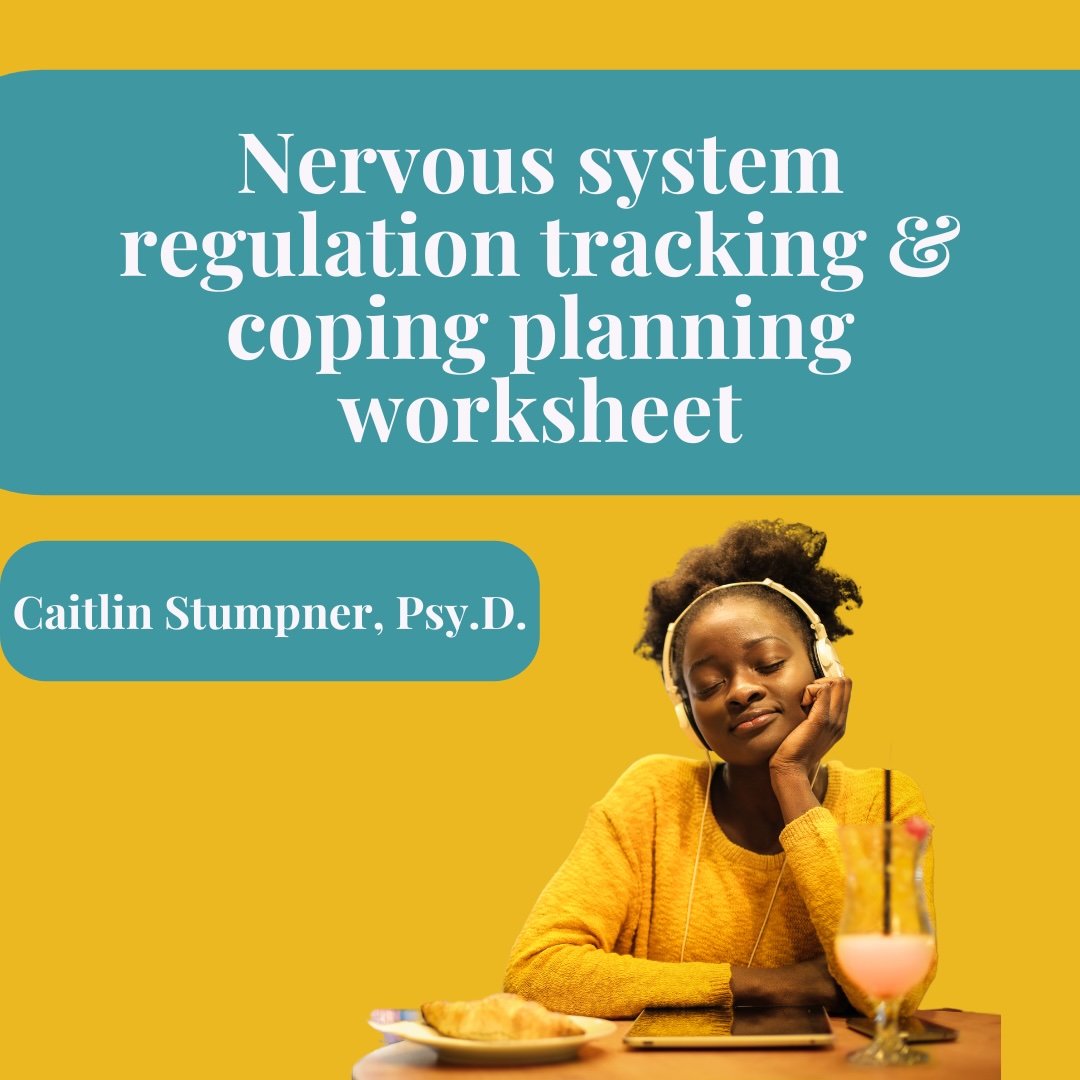Somatic Techniques for Stress and Anxiety
By Tess Brieva, MSW
Anxiety affects both the mind and body, often manifesting in physical symptoms such as muscle tension, irregular heartbeat, and headaches. However, in Western culture, there is a tendency to ignore bodily signals of anxiety. For example, intellectualizing is a common coping mechanism where individuals process emotions primarily through thoughts and analysis rather than experiencing them in the body. While this approach can create a sense of control, it often disconnects people from their physical and emotional experiences, leading to unprocessed stress and anxiety. Other common strategies to manage anxiety may include repression or avoidance of these feelings, which leads to overwhelm. Somatic therapy offers a more holistic approach to understanding and regulating the nervous system. By tuning into physical sensations and using intentional techniques, individuals can effectively manage anxiety and build emotional resilience.
What is Somatic Therapy?
Somatic therapy is a therapeutic approach that incorporates breathwork, sensation awareness, movement, and touch to support emotional regulation and healing. This body-centered modality helps individuals process and release stored trauma, regulate the nervous system, and improve overall emotional well-being. Unlike traditional talk therapy, somatic therapy focuses on the body's wisdom to guide healing.
Core Principles of Somatic Experiencing
Grounding Techniques: Bringing awareness to the present moment through physical sensations to foster stability and calm.
Tracking Sensations: Observing and exploring bodily sensations with curiosity rather than fear or avoidance.
Resourcing: Accessing internal and external supports, such as safe memories, soothing objects, or trusted relationships.
Pendulation: Moving between sensations of discomfort or distress and sensations of safety or ease. This process helps regulate the nervous system by allowing individuals to experience difficult emotions in manageable doses while reinforcing a sense of stability and resilience.
Titration: Gradual exposure to stressors over time to avoid overwhelming the nervous system and allow for controlled emotional processing.
How Somatic Therapy Helps Anxiety
Anxiety is not just a cognitive experience; it is stored in the body through muscle tension, shallow breathing, and other physical responses. Somatic therapy reconnects emotions with physical sensations, helping individuals release stuck emotions and prevent chronic stress responses. By addressing anxiety through the body, somatic techniques provide a direct pathway to relief and regulation.
Somatic Techniques for Anxiety Relief
Anxiety can be distracting and overwhelming – you may find that you have a hard time sleeping because of anxious thoughts, or feel held back by physical anxiety before giving a big presentation. Below are a variety of techniques to help bring safety to your body so you can feel confident in your ability to accomplish goals and truly relax.
1. Grounding Techniques
Mammalian Diving Reflex
Submerge your face in cold water or place a cold compress on your forehead and around your eyes for 30 seconds.
This activates the parasympathetic nervous system, slowing the heart rate and reducing stress.
It is particularly effective in moments of acute anxiety or panic, as it quickly shifts the body into a state of calm.
Using an ice cube or going outside when it’s cold can also help!
Color Identification Exercise
Choose one color and ask yourself “Where do I see this color in the room/space I’m in?”
Scan your environment, pointing out each object of that color.
Continue with different colors until you feel more grounded.
5-4-3-2-1 Grounding Exercise
This technique engages the senses to help reconnect with the present moment. This method is particularly useful for reducing racing thoughts and anxious rumination:
5 things you can see
4 things you can touch
3 sounds you can hear
2 things you can smell
1 thing you can taste
Source: gabby frost
2. Breathwork for Nervous System Regulation
Box Breathing (4-4-4-4 Method) – A structured breathing exercise that calms the nervous system:
Inhale for 4 seconds
Hold for 4 seconds
Exhale for 4 seconds
Hold for 4 seconds This technique slows the heart rate and promotes relaxation.
4-7-8 Breathing
Inhale for 4 seconds
Hold for 7 seconds
Exhale for 8 seconds This practice activates the parasympathetic nervous system, encouraging deep relaxation.
Deep Sigh
Take two short inhales through the nose, followed by a long exhale through the mouth. This technique helps release tension and reset the nervous system.
Diaphragmatic Breathing
Place one hand on your chest and the other on your abdomen.
Inhale deeply through your nose, allowing your abdomen to expand while keeping your chest still.
Exhale slowly through your mouth, feeling your abdomen fall.
Repeat for several breaths, focusing on slow, deep inhalations and exhalations. This technique promotes relaxation, reduces shallow breathing, and encourages full oxygen exchange, helping to regulate the nervous system.
3. Relaxing with Touch
The Butterfly Hug (Self-Soothing Technique)
Cross arms and place hands on opposite shoulders.
Gently tap alternately between the left and right sides. This method fosters a sense of calm and supports emotional regulation.
Other Touch Examples:
Tight hug from a loved one.
Use a weighted blanket.
Cuddle with your pet.
Notice the softness of a blanket or pillow around you.
4. Movement-Based Somatic Exercises
Shaking and Free Movement
Engage in natural shaking or free movement to discharge excess nervous energy.
Dance, yoga, and simple stretches can also alleviate tension and restore balance.
Progressive Muscle Relaxation (PMR)
Tense and release each muscle group from head to toe.
Helps relieve chronic tension and promotes relaxation.
Mindful Walking
Go outside and go on a short walk without music, just focusing on your surroundings and gentle movement.
5. Boundary Awareness in Somatic Therapy
Identify physical sensations associated with discomfort.
Practice tuning into gut feelings about personal space and emotional limits. By becoming aware of bodily signals, individuals can set and maintain healthier boundaries, reducing stress and anxiety.
Looking to go deeper?
Curious where your nervous system is at any moment and what you can do to regulate/feel better? Identify whether you’re in a Ventral Vagal (Safe and Social; “Calm, cool, collected & connected”), Sympathetic (Fight-or-flight; Mobilization), or Dorsal Vagal (Freeze, Fawn, or Shut Down; Immobilization). And then develop a nervous system informed coping plan that considers each state!
Anxiety Relief vs. Avoidance of Feeling
While anxiety relief is essential for overall well-being, it is important to recognize that some coping mechanisms can unintentionally become forms of avoidance. Suppressing emotions or numbing sensations might provide temporary relief, but it can also disconnect individuals from their inner experience, preventing true healing. Grounding techniques can be used not only to reduce distress but also to gently explore the sensations and emotions underlying anxiety. Instead of avoiding discomfort, try using grounding exercises to mindfully engage with your present experience. Notice what arises in your body with curiosity rather than fear—perhaps tension in your shoulders or a fluttering sensation in your stomach. By staying with these sensations in a regulated way, you can develop a deeper understanding of your anxiety and build resilience rather than relying on avoidance.
How to Incorporate Somatic Practices into Daily Life
Identify techniques that resonate with you and feel accessible.
Practice regularly to build self-awareness and emotional resilience.
Practice when you are feeling good, so you can more easily access skills when you are dysregulated.
Integrate simple exercises, such as breathwork, grounding, and movement, into your daily routines.
Seek professional guidance for deeper somatic healing, especially if processing trauma or chronic anxiety.
Conclusion
Somatic techniques provide practical and effective tools for managing stress and anxiety. By engaging the body in healing practices, individuals can foster emotional resilience and regulate their nervous system. With consistent practice, these techniques strengthen the mind-body connection, promoting long-term well-being and emotional balance.









